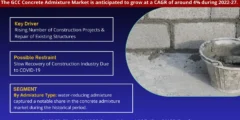Introduction:
In the ever-evolving world of construction, steel buildings have emerged as a revolutionary solution, reshaping the landscape of architecture and infrastructure. The use of steel in construction has seen a significant surge due to its numerous advantages, ranging from durability and cost-effectiveness to sustainability. This article explores the evolution and benefits of steel buildings, highlighting the reasons behind their increasing popularity in contemporary construction.
Historical Perspective:
The use of steel in construction dates back to the 19th century, but it gained significant traction during the industrial revolution. The advent of mass production techniques allowed for the fabrication of steel components on a large scale, leading to the construction of iconic structures such as the Eiffel Tower in 1889. As technology advanced, so did the application of steel in buildings, becoming a symbol of progress and innovation.
Structural Integrity and Durability:
One of the primary reasons for the widespread adoption of steel in construction is its exceptional structural integrity and durability. Steel is renowned for its strength, allowing for the creation of buildings that can withstand extreme weather conditions, earthquakes, and other natural disasters. Unlike traditional materials such as wood or concrete, steel does not warp, crack, or rot, ensuring a longer lifespan for the structure.
Design Flexibility:
Steel’s versatility in construction is a game-changer for architects and builders. Its malleability allows for intricate and creative designs, giving architects the freedom to experiment with unique shapes and structures. The flexibility of steel also facilitates the construction of large clear-span spaces, eliminating the need for cumbersome support columns and enhancing the interior layout of buildings.
Cost-Effectiveness:
While the initial cost of steel may seem higher than some traditional building materials, the long-term cost-effectiveness cannot be overlooked. Steel buildings require minimal maintenance compared to structures made from other materials. The durability of steel ensures that repairs are infrequent, resulting in reduced long-term costs. Additionally, the speed of construction associated with steel buildings contributes to cost savings, as the quicker completion time minimizes labor expenses.
Environmental Sustainability:
In an era where environmental consciousness is paramount, steel buildings shine as a sustainable construction option. Steel is highly recyclable, and a significant percentage of steel used in construction is made from recycled materials. Moreover, the construction process itself generates minimal waste compared to traditional building methods. The energy efficiency of steel buildings, achieved through advanced insulation and reflective roofing materials, also contributes to their eco-friendly profile.
Resistance to Fire and Pest Infestation:
Steel buildings provide a higher level of safety against fire hazards and pest infestations. Unlike wood, which is susceptible to termites and other pests, steel does not provide a habitat for destructive organisms. Moreover, steel has a high melting point, making it more resistant to fire. This characteristic not only enhances the safety of the occupants but also reduces insurance costs for steel building owners.
Adaptability for Expansion:
The adaptability of steel buildings to future expansions or modifications is a significant advantage. Steel structures can be easily expanded or altered to accommodate changing needs. This adaptability is particularly beneficial for businesses and industries that anticipate growth, allowing them to scale up their facilities without the need for extensive renovations or rebuilding.
Energy Efficiency and Green Building Standards:
Steel buildings are at the forefront of energy-efficient construction practices. The inherent strength of steel allows for the creation of buildings with large windows, maximizing natural light and reducing the need for artificial lighting during the day. Additionally, steel’s reflective properties contribute to lower cooling costs, as it reflects a significant portion of the sun’s rays.
Conclusion:
The evolution of steel buildings in modern construction is a testament to the material’s adaptability, strength, and sustainability. From towering skyscrapers to industrial warehouses and residential homes, steel has become an integral part of the construction landscape. As technology continues to advance, further innovations in steel fabrication and construction techniques are likely to enhance its already impressive array of benefits. In a world that demands efficiency, durability, and environmental responsibility, steel buildings stand tall as a symbol of progress in the world of construction.








